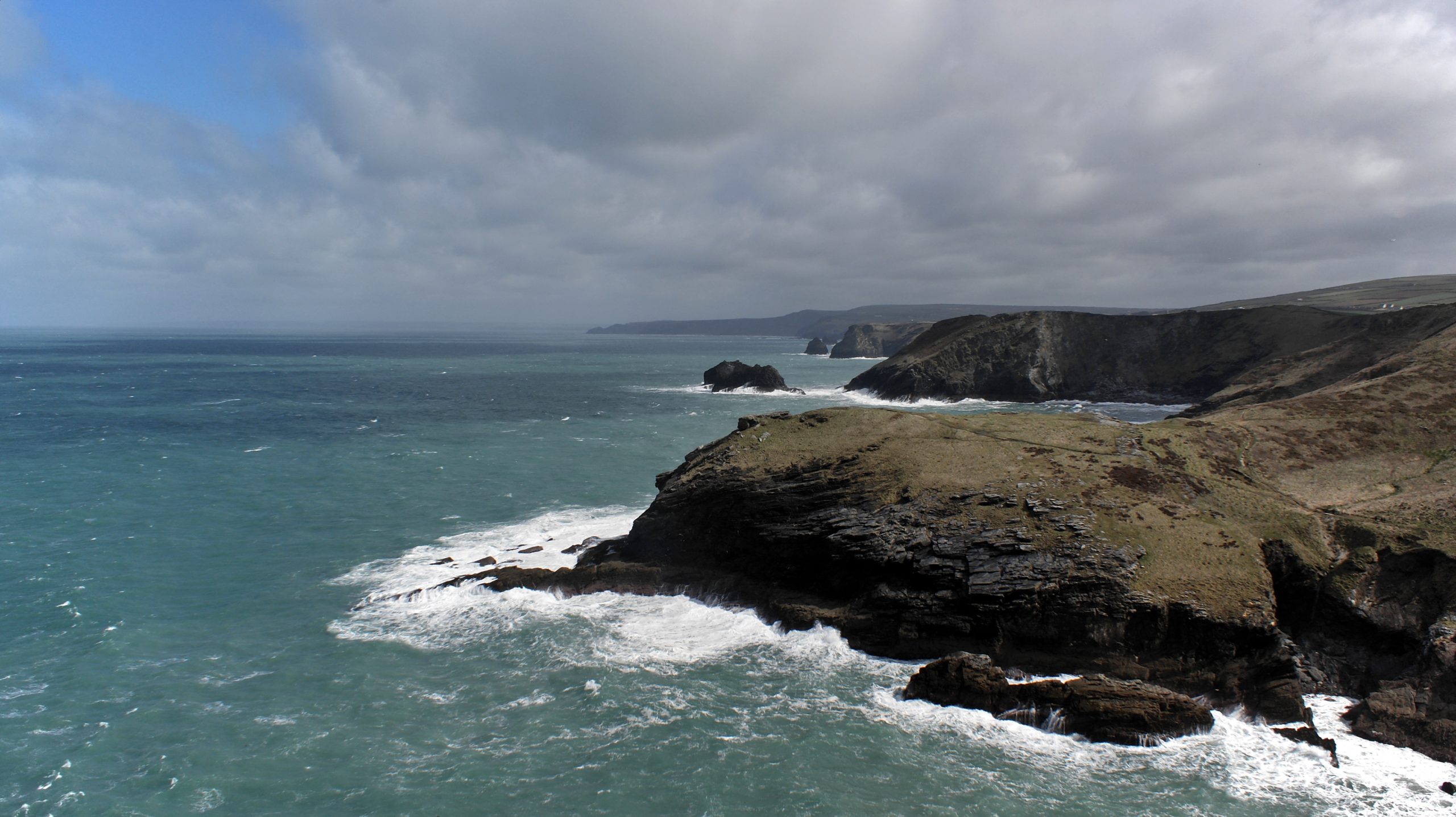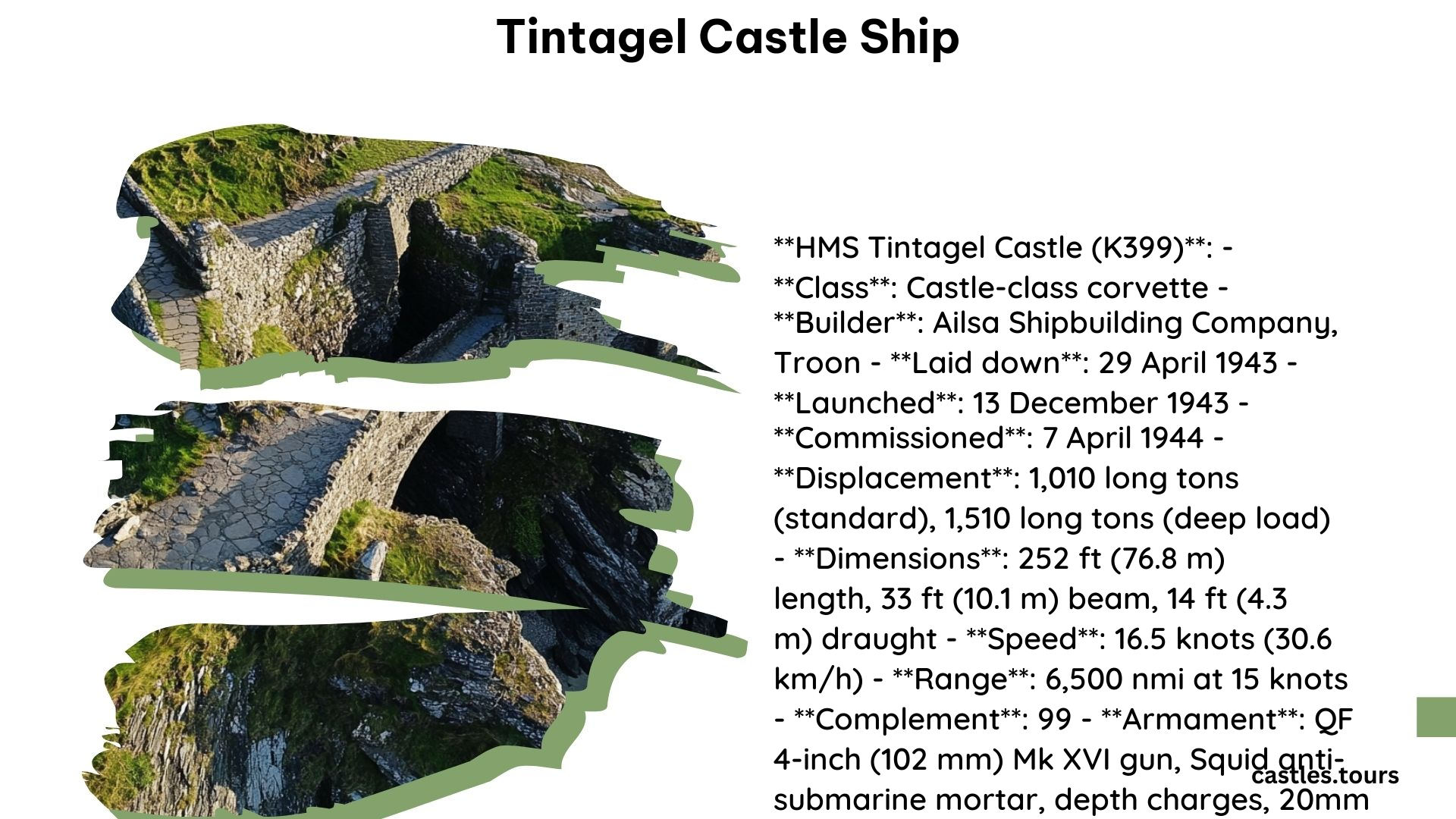Tintagel Castle, located in Cornwall, England, has a rich maritime history, with several vessels bearing its name over the centuries. From the medieval trade ships that docked at its shores to the modern-era ships that carried its name, this historic site has been closely tied to the sea. In this comprehensive blog post, we’ll delve into the fascinating stories of the Tintagel Castle ships, their specifications, and their historical significance.
What was the Role of Ships in the Medieval Trade at Tintagel Castle?

During the 5th to 7th centuries, Tintagel Castle was a significant site for trade, with ships from the Mediterranean Sea and the Atlantic Coast bringing a variety of goods to the region. While the specific details of the trade goods are not well-documented, it’s believed that the castle’s elite and the local economy benefited from the influx of luxury items, such as wine, olive oil, and fine pottery, as well as other commodities like metals and textiles.
What was the HMS Tintagel Castle (K399), a World War II Corvette?

The HMS Tintagel Castle (K399) was a Castle-class corvette built during World War II for the Royal Navy. Constructed by the Ailsa Shipbuilding Company in Troon, Scotland, the vessel was commissioned on April 7, 1944. Its key specifications include:
- Builder: Ailsa Shipbuilding Company, Troon, Scotland
- Commissioned: April 7, 1944
- Dimensions: Length 252 ft (76.8 m), Beam 33 ft (10.1 m), Draught 14 ft (4.3 m)
- Speed: 16.5 knots (30.6 km/h; 19.0 mph)
- Armament: Single QF 4-inch (102 mm) Mk XVI gun, Squid anti-submarine mortar, and Oerlikon light AA guns
- Fate: Scrapped in June 1958
What was the Tintagel Castle (1954), a Passenger and Cargo Ship?
In the mid-20th century, another ship bearing the name “Tintagel Castle” was built for the Union-Castle Mail Steam Ship Company. This passenger and cargo ship was constructed by Harland & Wolff Ltd. in Belfast, with the following key details:
- Builder: Harland & Wolff Ltd., Belfast
- Launched: February 4, 1954
- Dimensions: 477.2 x 65.8 x 29.2 feet
- Speed: 16 knots
- Fate: Sold to Pateras Bros Ltd., Greece, in 1971, renamed ARMAR, and eventually scrapped in 1978
What Other Vessels Have Been Associated with Tintagel Castle?
While the three vessels mentioned above are the most well-documented ships associated with Tintagel Castle, it’s possible that other vessels, both historical and modern, have also borne the castle’s name. However, without further research and documentation, it’s difficult to provide a comprehensive list of all the ships that have been linked to this iconic site.
Conclusion
Tintagel Castle’s maritime history is a fascinating aspect of its rich heritage. From the medieval trade ships that docked at its shores to the modern-era vessels that carried its name, this historic site has been closely tied to the sea. By exploring the stories of the Tintagel Castle ships, we gain a deeper understanding of the castle’s role in regional and global trade, as well as its continued significance in the maritime world.
References:
- Norway Heritage: https://www.norwayheritage.com/
- Alternate Universe Warships: https://www.alternateuniversewarships.com/
- Uboat.net: https://uboat.net/allies/warships/ship/5524.html
- Wikipedia: https://en.wikipedia.org/wiki/HMS_Tintagel_Castle_(K399)
- Ships Nostalgia: https://www.shipsnostalgia.com/guides/Tintagel_Castle_(1954)
